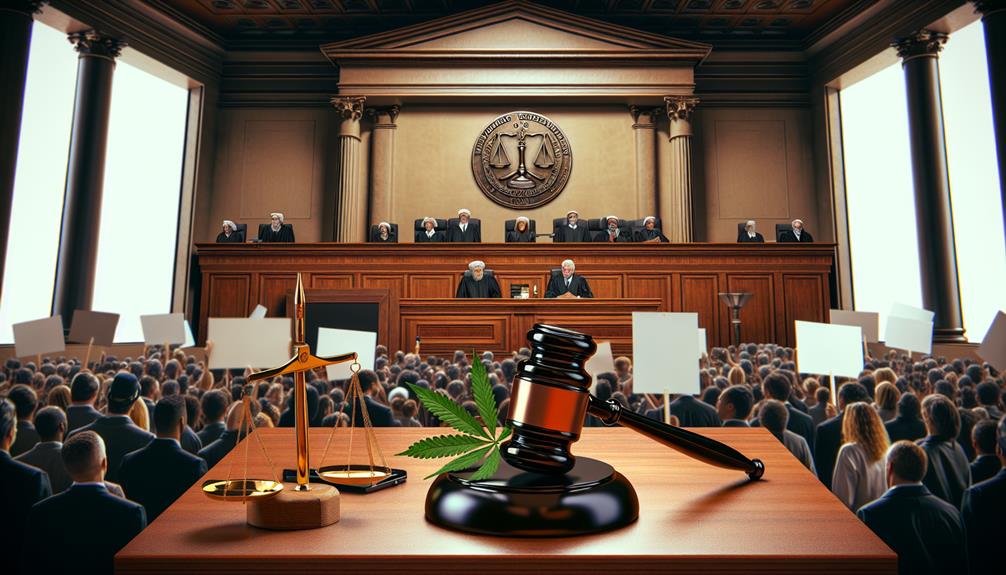You might not be aware that the history of CBD, or cannabidiol, doesn't start with recent legalization efforts or the boom of internet wellness trends. Its story stretches back thousands of years, with its first recorded use for therapeutic purposes found in ancient civilizations. You're likely familiar with CBD's contemporary presence in everything from oils to gummies, but what remains less known is how this non-intoxicating component of the cannabis plant has navigated through periods of medicinal acclaim, legal controversy, and scientific discovery. As you consider the tapestry of its past, you may find yourself questioning how such a complex substance remained on the fringes of mainstream medicine for so long and what changed to bring it into the limelight. The evolution of CBD use is not just a narrative of a compound; it's a reflection of societal attitudes towards wellness, science, and legal frameworks—each chapter yielding insights that challenge our understanding of natural remedies and their place in modern therapy.
Ancient Roots and Remedies
Delving into the ancient roots of cannabis, you find that countless civilizations recognized and harnessed its medicinal properties, with archeological evidence pinpointing its use as far back as 12,000 years ago. Near the Altai Mountains in Central Asia, the cannabis plant first served a therapeutic role, marking the inception of a practice that would traverse continents and epochs.
Emperor Sheng of China is often hailed for the first documented use of medicinal cannabis around 2737 BCE. His pioneering application for various ailments suggests a sophisticated understanding of the plant's potential benefits. The history of CBD, a constituent of the cannabis plant, is intrinsically linked to these early forays into medicinal cannabis. Different cultures, spanning from Asia to the Middle East, integrated cannabis into their medical compendiums, exploiting its utility for pain relief and its sedative qualities.
Tracing the lineage of cannabis use, you unearth a tapestry of applications beyond health—such as in textiles and rituals. Yet, it's the enduring therapeutic use that underscores the plant's historical significance. Despite the stigma and legal challenges it later faced, the initial embrace by ancient societies laid the groundwork for the modern resurgence in CBD interest and research.
Discovery and Isolation
Pioneering the scientific exploration of cannabis, Roger Adams successfully isolated cannabidiol (CBD) from the hemp plant in 1940, laying the foundation for a deeper understanding of its constituents and their effects. Adams, a prominent figure in organic chemistry, not only isolated the first CBD but also another cannabinoid, cannabinol (CBN). This milestone in cannabis research marked the beginning of an era that would gradually unveil the complexity of cannabinoids and their interactions with the human body.
Adams' protégé, William Brooke O'Shaughnessy, furthered this initial discovery, although it was not until 1964 that Raphael Mechoulam isolated THC, the compound responsible for cannabis' psychoactive properties. Mechoulam's elucidation of THC's stereochemistry underscored the significance of Adams' earlier work with CBD, which had identified it as an important molecule before the discovery of THC.
This foundational research set the stage for the identification of the endocannabinoid system and cannabinoid receptors within the human body, revolutionizing the potential for CBD in medicine. Your understanding of CBD's therapeutic applications today owes much to these scientific endeavors, which have meticulously mapped the intricate relationship between cannabinoids and physiological processes.
Legal Challenges and Controversies

The legal landscape surrounding the use of CBD and cannabis has been fraught with controversy, reflecting a complex interplay between scientific discovery, societal attitudes, and regulatory frameworks. You've witnessed the tension between advocates pushing for legal access to cannabis for its purported medical benefits and opponents concerned about its potential as a gateway drug.
- Controlled Substances Act and Cannabis Prohibition
- *Marihuana Tax Act of 1937*: Implemented heavy taxes and regulatory requirements, effectively limiting cannabis use and research.
- *Shift in Perception*: Discovery of the ECS and recognition of CBD's non-psychoactive effects influenced debates on cannabis' classification as a Schedule I drug.
- Path to Legalization and Access
- *Medical Marijuana Advancements*: The first state to legalize medical marijuana marked a pivotal moment in changing the legal status of cannabis.
- *CBD Specific Legislation*: Recent laws distinguish between CBD and cannabis with psychoactive THC, complicating the regulatory environment.
Analytically, it's clear that the evolution of CBD's legal status is tied to the World Health Organization's findings and ongoing research that fills existing knowledge gaps. This dynamic landscape requires scholarly attention to navigate the legal challenges and controversies that continue to shape the future of CBD use.
Scientific Breakthroughs
Amid the complexities of cannabis legislation, scientific breakthroughs have played a pivotal role in shaping our understanding of CBD and its place in medicine and society. The isolation of CBD, a non-psychoactive compound within cannabis, has catalyzed a paradigm shift in medicinal use and cannabis research. It was first discovered in the context of Western medicine's grappling with cannabis's therapeutic potential, a discourse that dates back to when Queen Victoria's physician, Russel Reynolds, prescribed cannabis for her menstrual cramps.
The landmark identification of the main psychoactive phytocannabinoid, THC, in Israel in 1964, laid the groundwork for the discovery of the endocannabinoid system (ECS)—a monumental stride in biomedicine. This system's role in regulating pain, mood, appetite, and immune function has substantiated the medical community's interest in CBD. Ongoing research is essential to delineate the full spectrum of CBD's therapeutic benefits and its safety profile.
As CBD's versatility becomes increasingly recognized, its market is poised to burgeon with an array of niche products. This expansion reflects the scientific community's commitment to unraveling the complexities of cannabis and its constituents, ensuring that future applications of CBD are grounded in robust, empirical evidence.
Modern Acceptance and Use

In an era where natural remedies are increasingly sought after, CBD has emerged as a popular choice for individuals exploring alternative health and wellness options. The CBD market has seen a remarkable expansion, reflecting a paradigm shift in both consumer behavior and regulatory landscapes. Initially, the effects of cannabis were shrouded in controversy, but as you delve deeper into its history, you'll find CBD was first used with much caution due to its association with the Controlled Substances Act.
However, modern research and anecdotal evidence have illuminated the potential of CBD in the treatment of a variety of conditions. Here's an analytical snapshot:
- CBD Market Evolution
- Rapid growth fueled by demand for natural treatments
- Diversification into products like edibles, topicals, and pet care
- Medicinal Uses and Research
- Studies investigating CBD's effects associated with anxiety, pain, and inflammation
- Signs of efficacy in complex ailments such as multiple sclerosis
The World Health Organization has recognized the therapeutic potential of CBD, further legitimizing its use. As you're using CBD today, remember that it stands on the shoulders of historical use and scientific exploration, promising a future where its full potential can be harnessed for medicinal and therapeutic applications.
Frequently Asked Questions
What Is the Historical Background of Cbd?
You're exploring CBD's historical background, delving into ancient remedies and traditional medicine. Hemp cultivation dates back centuries, with Chinese texts and Ayurvedic practices documenting its use. It's been part of religious ceremonies and shamanic rituals, offering insight into indigenous knowledge. Medieval use and colonial hemp reflect its enduring role. Despite lacking the full context, you recognize CBD's deep roots in history, shaping its current therapeutic applications.
Why Did CBD Become so Popular?
CBD's surge in popularity is like a snowball effect; as medical research debunked CBD myths and highlighted its pharmacological properties, the market grew exponentially. Regulatory milestones amplified this growth, with consumer testimonials and wellness trends fueling the fire. You've seen product diversity increase, from oils to edibles, buoyed by celebrity endorsements and societal acceptance. This isn't just a fad; it's a reflection of a deep-seated shift towards natural health solutions.
How Long Have People Used Cbd?
You're exploring ancient practices and delving into herbal remedies that underscore CBD's deep roots in medicinal usage. Ethnobotanical studies, supported by archeological evidence, reveal traditional medicine and shamanic traditions embraced CBD long before modern recognition. Cultural significance was attributed to ritualistic uses, highlighting plant domestication's role in health practices. Your analysis, devoid of a broad historical context, focuses on the timeless connection between humans and CBD's therapeutic potential.
When Was CBD First Legalized?
You're navigating the complex maze of CBD legalization, where milestones like the 2018 Farm Bill illuminate the path. This Bill's significance marked a federal shift, legalizing hemp-derived CBD, despite state by state variations. Federal scheduling still debates CBD's status, influenced by legal battles and evolving public perception. Medical advocacy, bolstered by research breakthroughs, reshapes international laws and contributes to the economic impact, even as the landscape remains a puzzle of regulations.
